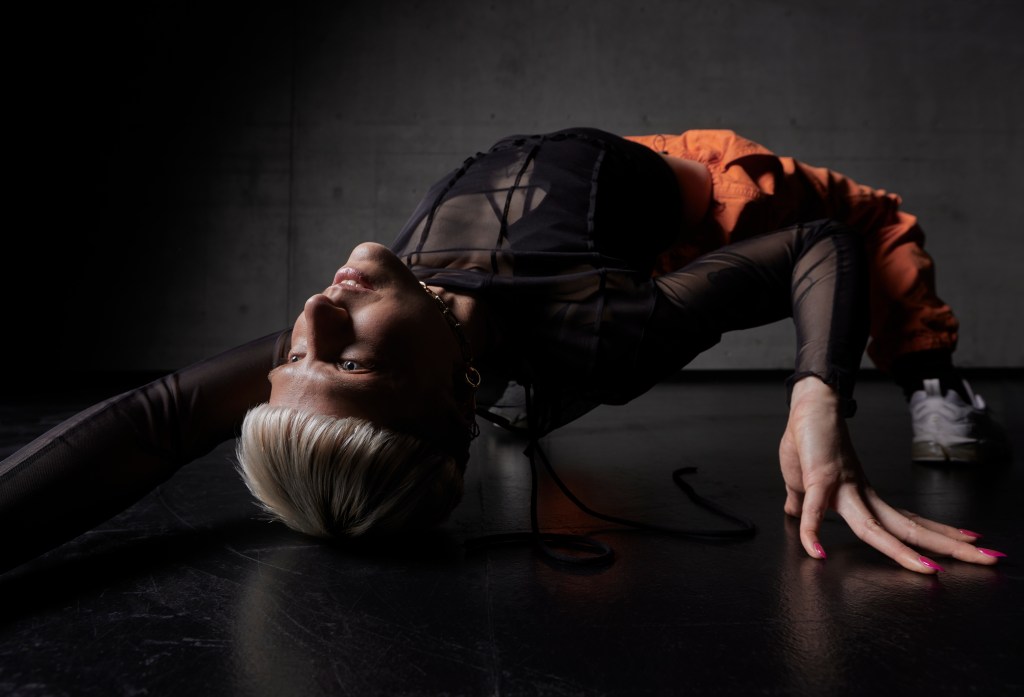This year’s season of Sydney Dance Company’s New Breed is everything it purports to be. This is dance of the highest calibre, performed at a scale and with a level of skill and training that only the most well-funded production houses and companies can produce. No doubt, in the context of large state-funded performance companies, it is at the more innovative end.
This year’s crop of young diverse choreographers know their stuff. The performances are affecting, disciplined and bear all the hallmarks that lovers of these genres will appreciate. There are clumps of bodies moving in more or less coordinated groups, with multicentred points of interest and plenty of pointed toe and good form. These highly-trained bodies perform moves that most of the audience members could only dream of. New Breed offers well-choreographed illusions of chaos.
In Sophia Ndaba’s The Veil of Separation, six bodies tear apart and come back together, in an exploration of the ‘idea of a split and the liminal space created between sides’. Centred on a giant hanging fabric, courtesy of set designer Aleisa Jelbart, the dancers traverse the lines between human, animal, machine and extraterrestrial, pushing, pulling and jerking, all underscored by 80s synth pop.
Jenni Large takes inspiration from vampire culture for her work Sucker, a highly sexualised and energetic piece, which she hints at being a rejection of postmodernism. With intense flashing strobe lights and thumping bass, it could be a nightclub or a horror film. A strange cult of lusting bodies in pink and red velvet catsuits and wigs, again by Jelbart, throb and pulse in an intimidating pack back and forth across the stage. A kind of porn/horror soundtrack of human groans, whispers and screeches plays throughout.
In Drunk Tank Pink by Charmene Yap, the largest group of dancers for the night take up a significant portion of the stage. Dressed in shades of white and beige, the bodies mostly move together, while some break off for solo dances showcasing their substantial talent. Taking inspiration from a 1970s psychology experiment, Yap’s piece explores the ways in which we are affected by unexpected forces within us, between us and around us, and how to interpret the relentless sensory saturation of modern life.
Luke Hayward’s The Remnants Of breaks in style from the others and finds its genesis and tradition in the mundane movement styles of New York postmodern dance of the 1960s. This is an impressive choreographic debut and is described as a visual autoethnography. The piece employs Dadaist and Romanticist ideas to find poetic motivation in the ‘collision between music and body’. Dadaist cut-up techniques create visual sentences, specific rhythms and musicality.
Hayward begins almost completely naked looking at the audience, before putting on a sock, working with small tables, pushing them around the stage, sitting on them and taking things on and off them. It is an arresting, humorous and refreshing performance.
Nevertheless, for this writer, despite its high quality and innovative aims, there is something unsatisfying and safe about this kind of work. The problem is the very excellence for which it strives may make it unchallenging for an audience member used to seeing local dance companies operating at lower economic levels of the arts industries, where the lack of an economic imperative to maintain high-level funding and a subscription base allows for scrappier, more dangerous and more challenging work.
New Breed has its aesthetic origins in classical and high modern dance forms. These are still the same highly trained bodies, admittedly in a slightly wider spectrum of shapes and compositions than the ballet, performing the same dictionary of well tried and tested canonical gestures designed to demonstrate classical European ideas of excellence. The movements are sometimes jerkier and wilder, the choreography may aim for a more chaotic effect, but the aesthetic frame, the directions of energy flows, the idioms of movement, are recognisable.
Apart from Hayward’s work, tradition rather than innovation is behind these pieces, and even his is very traditional, albeit a different tradition of modern dance. This makes the claims to diversity and innovation somewhat questionable.
Still, for this audience and in this context, SDC’s New Breed hits all its marks and is everything it is cracked up to be. If you want to see the as-innovative-as-it-can-tolerably-get forefront of new choreographers arriving in the world of artistic excellence, which constitutes the city’s most prestigious and lauded professional dance company, do not miss this.
New Breed 2022 Sydney Dance Company
Carridgeworks
Tickets: $49-$59
New Breed 2022 will be performed until 17 December 2022.





